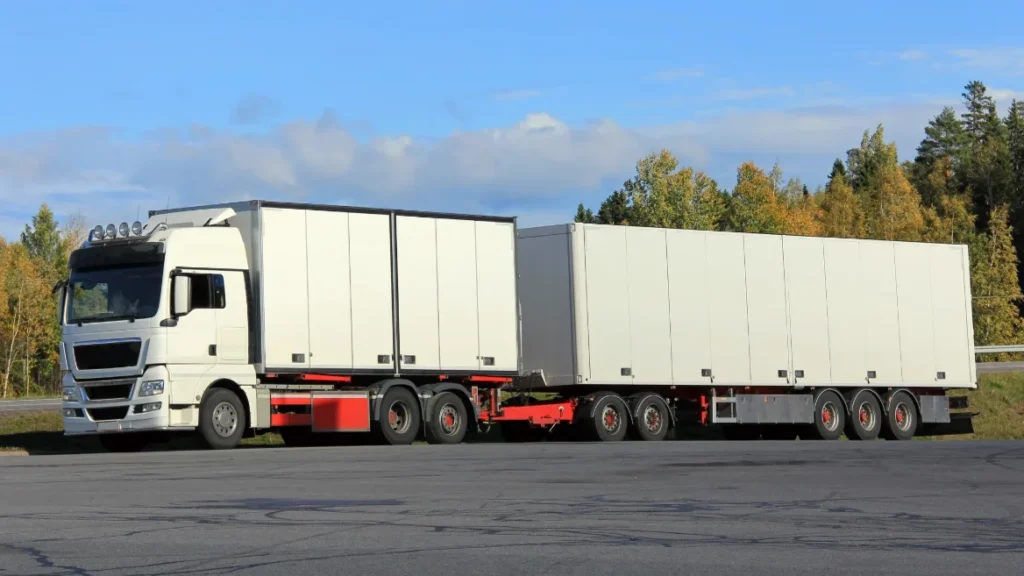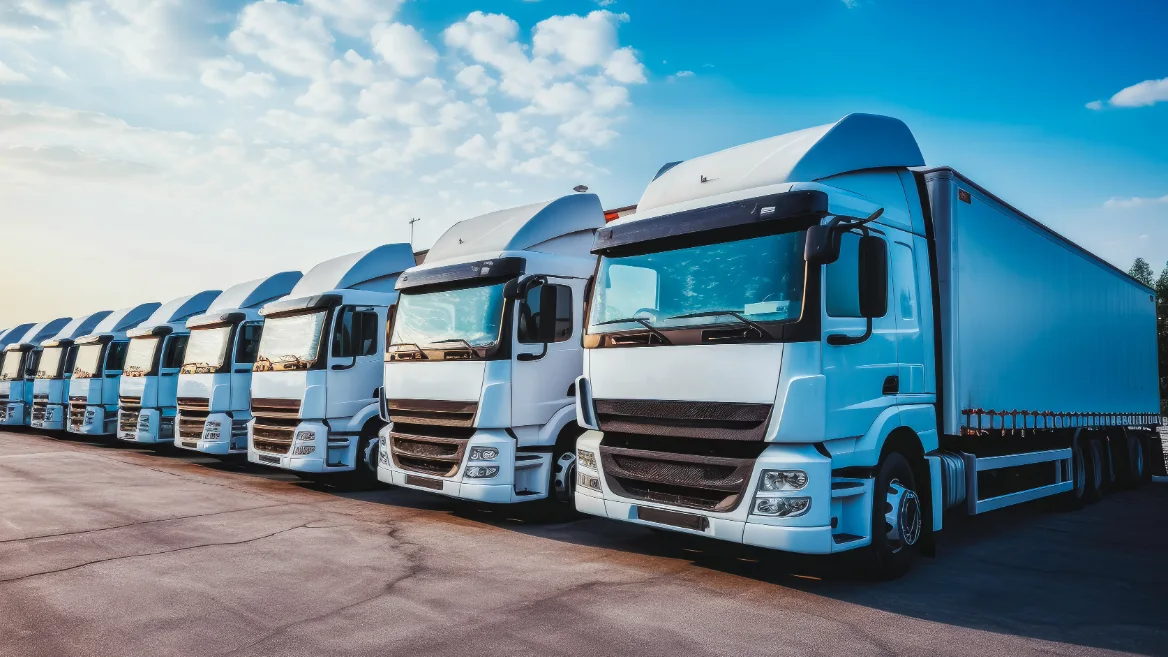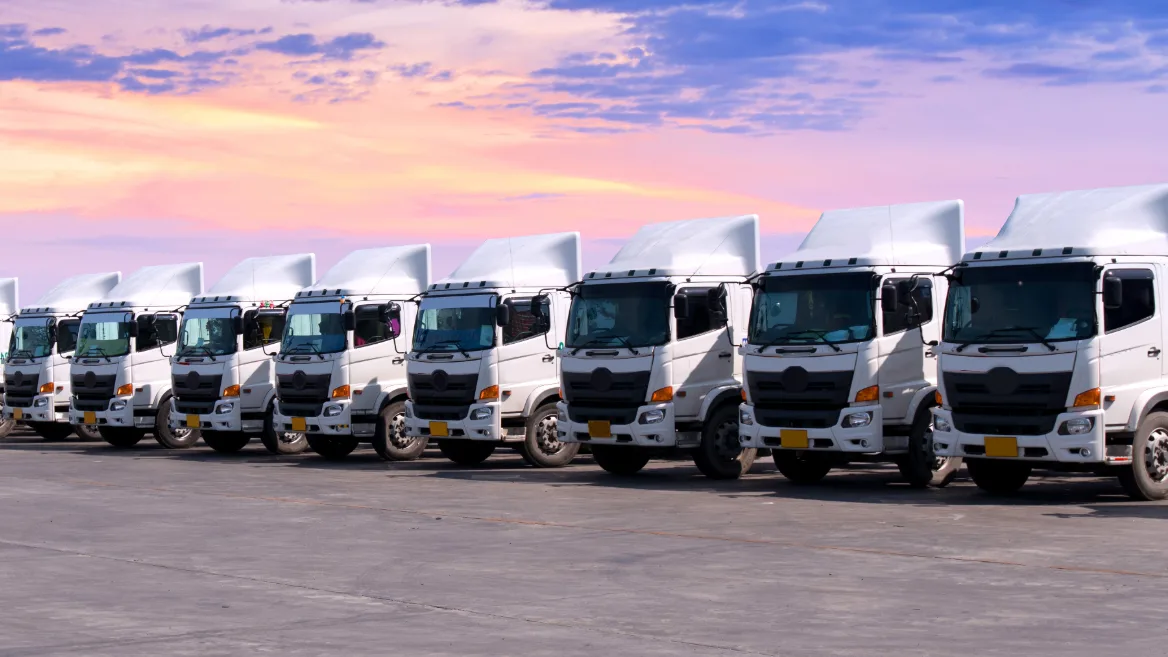As the demand for freight transport grows, so too does the pressure on the haulage sector to improve efficiency and reduce carbon emissions. One solution gaining traction is the longer heavier vehicle (LHV), a logistics innovation that’s sparking debate across the UK and Europe.
Could these extended giants be the future of sustainable haulage? In this article, we’ll explore what defines an LHV, why they’re being trialled, and how they stack up on safety, efficiency, and environmental grounds.
What we’ll cover
Fleets, bookings, subcontractors, compliance & payments.
With HX, you can manage them all in one place.
What defines a longer heavier vehicle?
LHVs are freight vehicles that exceed standard UK regulations in both weight and length. While the typical articulated lorry is capped at 44 tonnes and 16.5 metres, LHVs can stretch up to 25.25 metres and weigh as much as 60 tonnes.
These extended vehicles are often built with multiple trailers and are designed to transport more cargo with fewer trips. They’re not yet widely legal in the UK, but government-backed trials have been exploring their feasibility.

If you’re unsure of current vehicle size limits, see our full guide on lorry sizes and UK regulations. It’s essential reading for any haulier considering how LHVs might fit into their future fleet.
There’s also a growing interest in how these vehicles could reshape haulage fleet composition. Operators looking to futureproof their business may want to consider how extended vehicles fit alongside lighter, more agile alternatives.
Why are LHVs being trialled in the UK and Europe?
There are three main drivers behind the UK and Europe’s interest in LHVs: emissions reduction, cost savings, and driver shortages. With freight volumes increasing and sustainability targets tightening, moving more goods with fewer vehicles makes strong business sense.
Europe has been testing LHVs for over a decade, while the UK started with trials of longer semi-trailers (LSTs). These smaller extensions paved the way for discussions around whether larger vehicles could work on a wider scale.
Trials also provide insight into which types of freight are most suited to LHV use. Large-volume sectors like retail, e-commerce, timber, and food distribution stand to benefit the most.
How LHVs improve logistics efficiency
The key advantage of LHVs is simple: one trip replaces two. Fewer journeys mean lower costs, less road congestion, and better HGV fuel efficiency.
These benefits are especially useful for hauliers moving high-volume, low-weight goods such as packaging, retail stock, or pallets.
Here’s where LHVs can help:
- Reduce the number of trips per consignment
- Lower driver hours and fuel consumption
- Boost margins for large haulage businesses
- Improve asset utilisation through consolidated loads
- Allow freight forwarders to move goods more economically
Digital platforms like our Freight Exchange can support load matching for LHV operators. This helps maximise efficiency and keeps empty mileage to a minimum.
For small haulage businesses, they may not yet be practical, but partnering with larger firms for subcontracted loads could offer new opportunities. Shared-use or collaborative logistics could make LHVs viable for a broader share of the sector.

Environmental impact of LHVs
On paper, LHVs look cleaner because one run can carry what used to take two.
In practice, the footprint shifts with the route, the load and how consistently those bigger trailers run full.
Fuel savings and lower emissions
Because LHVs carry more per journey, they use less fuel per tonne of cargo. Trials in Europe have reported emissions savings of between 10% and 30%, depending on the route and cargo type.
This makes them an attractive option for hauliers aiming to cut carbon while staying competitive. It also supports the UK’s broader decarbonisation goals in the transport sector.
For businesses looking to strengthen their ESG reporting, switching part of the fleet to LHVs could boost environmental performance. It may also help win contracts with large retailers that prioritise sustainability in their supply chains.
Risks of modal shift from rail to road
There is concern that LHVs could pull freight away from rail, which is a more sustainable mode of transport. This risk is especially high if the cost savings from road haulage outweigh the environmental incentives for using rail.
Policy decisions will need to ensure that LHVs complement rail rather than replace it. Otherwise, the overall environmental benefit of these vehicles could be lost.
This debate is particularly relevant in the UK, where rail freight plays a key role in transporting bulk materials. Without coordinated investment in intermodal hubs, these longer vehicles could end up replacing rather than supporting greener alternatives.
Road safety and operational considerations
Size doesn’t tell the whole story when it comes to safety.
Outcomes hinge on how LHVs are driven, maintained and routed across real roads.
Driver training and visibility challenges
Operating an LHV is more complex than driving a standard HGV. Longer vehicles have wider turning circles, more blind spots, and require greater braking distances.
That means LHV drivers must receive additional training to manage these risks. In-vehicle safety tech, like cameras and sensors, can also help reduce accident potential.
If you’re refreshing your safety policies, check out our guide to HGV speed restrictions in the UK. Understanding legal limits is all-important when testing extended vehicles.
Standard licensing may not be sufficient for LHV operation in future. Industry voices have already called for a new driver certification scheme to be introduced before full rollout.
Infrastructure wear and accident risk
Bigger vehicles mean more wear and tear on road surfaces, bridges, and roundabouts. There’s also a higher risk of damage in the event of a crash, given the increased size and load.
Authorities will need to assess which roads are suitable for LHVs and invest in infrastructure upgrades. This includes signage, lay-bys, turning spaces, and bridge assessments.
Additionally, truck parks may need to be adapted to allow for these longer vehicles, making secure truck parking more difficult to find in the short term.
Urban deliveries are especially challenging for LHVs due to tight corners and limited space. That’s why they’ll likely remain a long-haul tool rather than a last-mile solution.
Trial results across Europe and the UK
Plenty of real-world pilots now show what works and what doesn’t. Here’s a quick snapshot of some results:
| Country | Trial Type | Outcome |
|---|---|---|
| United Kingdom | LST (longer semi-trailer) trial | Average 8.2% of journeys saved and ~70,000 t CO₂e avoided |
| Germany | Lang-Lkw field test | No significant problems in the field trial; positive results led to route-based regular operation of vehicle types 2-5. |
| Sweden / Finland | Nordic HCT (high-capacity transport) | Operation up to 74-76 t on designated networks with ongoing monitoring; policy has expanded routes and combinations over time. |
Barriers to adoption and policy gaps
Despite promising trial outcomes, there are still major hurdles. The UK lacks a unified framework for LHV deployment, and existing infrastructure is often unfit for larger vehicles.
Other challenges include:
- Higher vehicle insurance premiums (explore our HGV insurance guide)
- Public scepticism around road safety
- Modal conflict with rail freight providers
- Limited turning areas and loading zones
Are longer heavier vehicles the future of sustainable haulage?
LHVs won’t suit every route or every business model. But for trunk roads and high-volume delivery networks, they may become a practical part of the mix.
Used strategically, LHVs can help meet carbon targets and reduce costs. But they’ll need smart regulation, proper infrastructure and yard management considerations, and careful integration with other freight modes.
With the right support, LHVs could form part of a broader shift toward cleaner, more efficient freight. The next few years of UK policy will determine whether they remain a trial, or become the norm.
Frequently asked questions
Are LHVs allowed on UK roads?
LHVs aren’t yet allowed for general use, but trials have taken place with longer semi-trailers. Wider rollout would require regulatory approval and road infrastructure checks.
What countries currently allow LHVs?
Sweden, Finland, the Netherlands, and parts of Germany allow LHVs on selected routes. Each has specific rules regarding vehicle weight, length and approved roads.
Do LHVs reduce carbon emissions?
Yes, LHVs use less fuel per tonne of freight. That translates to lower emissions, especially on long-distance, high-capacity routes.
Will LHVs replace standard HGVs in the future?
Not entirely. LHVs will complement standard HGVs by handling bulkier loads on suitable roads, while traditional trucks will still manage local and urban deliveries.
How do LHVs affect rail freight?
There is a risk that LHVs may divert freight from rail. That could increase total emissions unless policies protect and promote rail for long-distance haulage.
What were the findings of recent LHV trials?
Trials showed reduced emissions, fewer trips and no increase in accident rates. However, success depended heavily on strict route planning and driver training.




